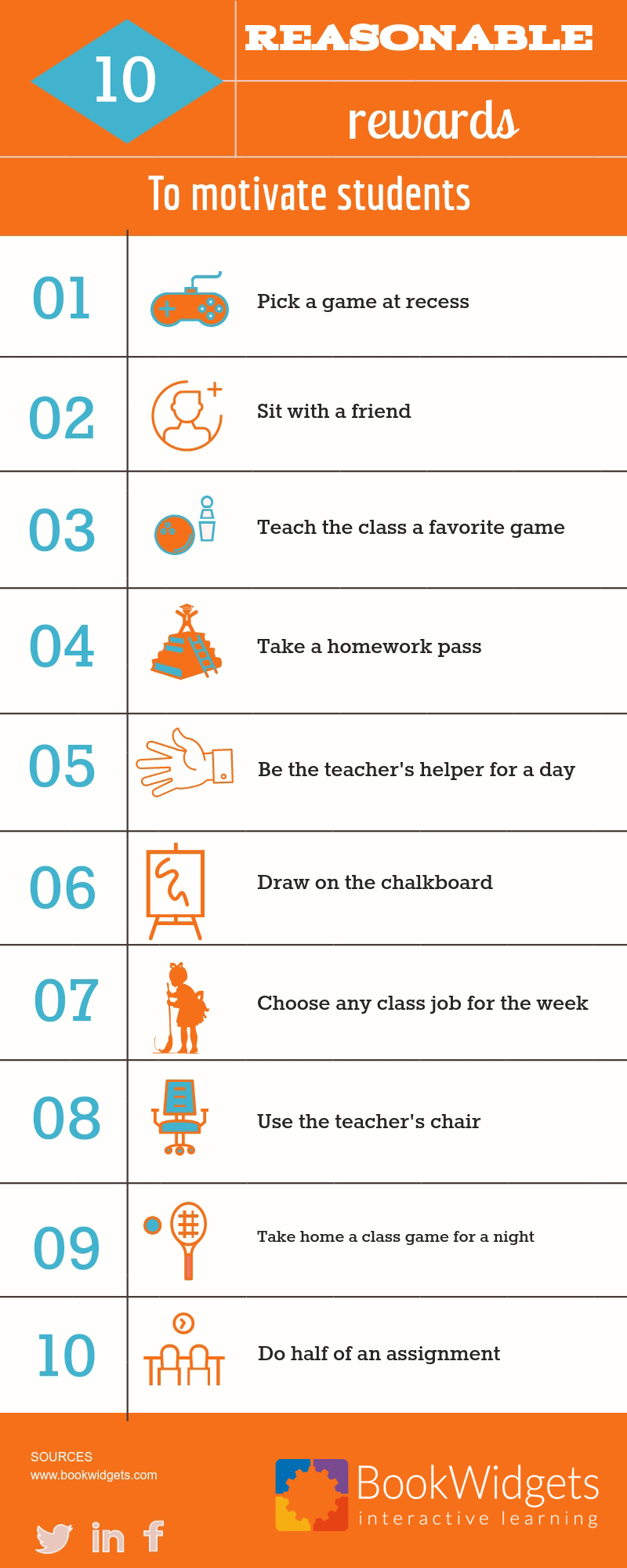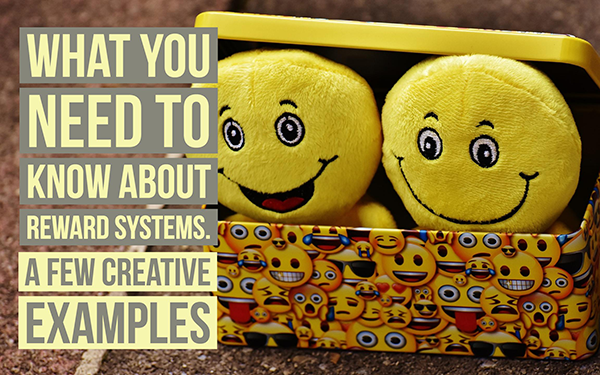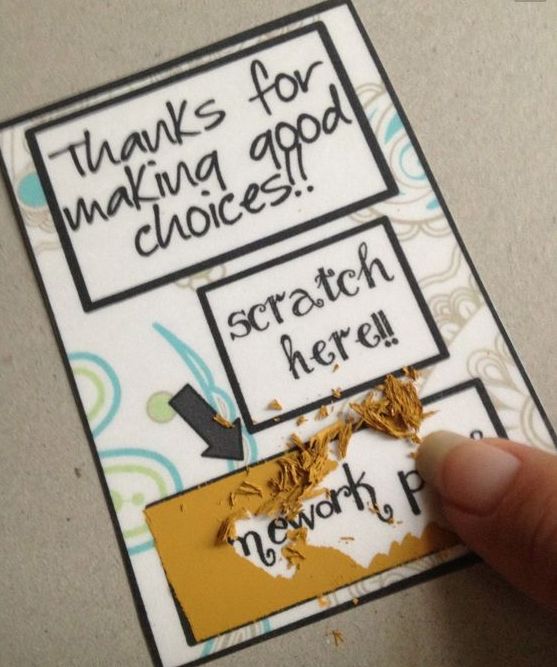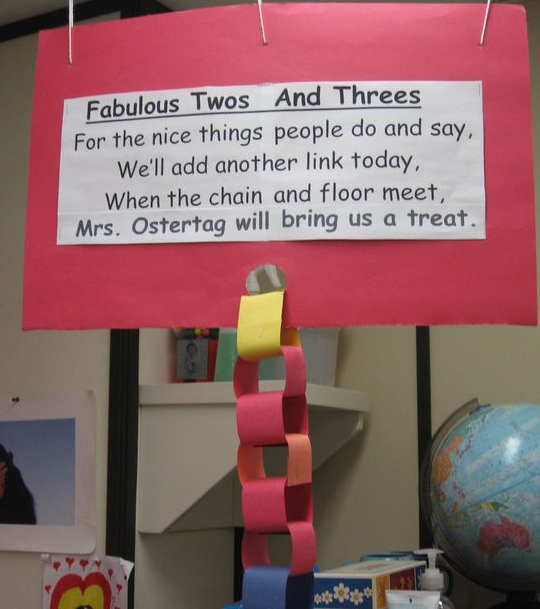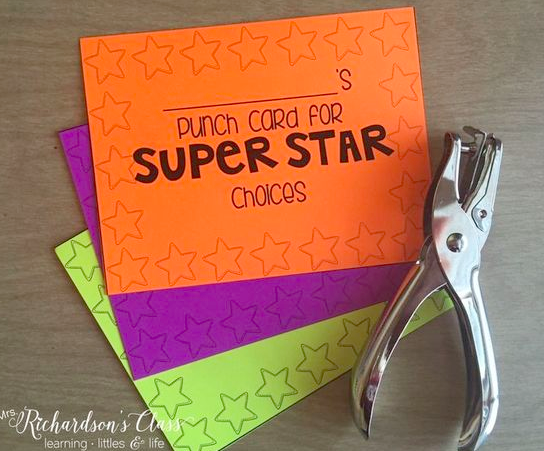Using reward systems to motivate students
 Lucie Renard —
Lucie Renard —
Motivating your students to learn and to participate can be very hard. Some teachers have their hands full with class management and they don’t even get to teaching.
In order to stimulate learning and to motivate good behavior, lots of teachers use rewards for students.
In this post I’ll start with the advantages of reward systems and why you should use one. But watch out. It’s not all sunshine and rainbows. Some teachers and educators aren’t a big fan of constantly rewarding your students. Reward systems also have their disadvantages. I’ll also show you some fun and creative reward systems for in the classroom and 10 reasonable rewards to give your students. On top of that, I’ll show you how to put in work a good reward system.
Here’s the overview:
- Advantages of a reward system
- Disadvantages of a reward system
- Creative reward systems
- 10 reasonable rewards
- Online reward system for primary school
- Online reward system for middle school and high school
- How to put a reward system to work?
Let’s dig in!

Advantages of a reward system
1. Appropriate behavior
 Students conform to appropriate behaviors when rewarded either intrinsically or extrinsically.
Students conform to appropriate behaviors when rewarded either intrinsically or extrinsically.
2. Increased motivation
 Students will show interest and raise their participation in the everyday classroom tasks, responsibilities and learning.
Students will show interest and raise their participation in the everyday classroom tasks, responsibilities and learning.
3. Joyful students
 Incentives for students motivate them to be more productive because they create a feeling of pride and achievement. Being successful makes you happy.
Incentives for students motivate them to be more productive because they create a feeling of pride and achievement. Being successful makes you happy.
4. Boosted self-esteem
 Every success story helps students become more self-confident. They are proud and also encouraged to achieve another successful result.
Every success story helps students become more self-confident. They are proud and also encouraged to achieve another successful result.
5. Completed homework
 The National Association of School Psychologists suggests that reward systems help motivate students to complete their homework. It’s rather shocking that without rewards, students don’t complete it.
The National Association of School Psychologists suggests that reward systems help motivate students to complete their homework. It’s rather shocking that without rewards, students don’t complete it.
6. Improved results
 Rewarding students encourages and endorses school effort. They lead to improved outcomes for students.
Rewarding students encourages and endorses school effort. They lead to improved outcomes for students.


Disadvantages of a reward system
Before you jump into the reward systems, you should also know the disadvantages.
1. Addiction
 Students can become addicted to classroom rewards. This means that they won’t study anymore without them.
Students can become addicted to classroom rewards. This means that they won’t study anymore without them.
2. Devaluation
 After a while rewards are no surprises anymore and they come as expected. They will lose their effect. Watch Dan Pink’s excellent TED talk on motivation for more details on how reward systems can utterly fail.
After a while rewards are no surprises anymore and they come as expected. They will lose their effect. Watch Dan Pink’s excellent TED talk on motivation for more details on how reward systems can utterly fail.
3. Race against the clock
 Students focus more on finishing an assignment to win a classroom price, instead of learning what the lesson is meant to teach. Finishing it is more important than to actually understand it.
Students focus more on finishing an assignment to win a classroom price, instead of learning what the lesson is meant to teach. Finishing it is more important than to actually understand it.
4. Control and manipulate
 Students might feel they are manipulated and controlled by you. This also teaches the student how to manipulate.
Students might feel they are manipulated and controlled by you. This also teaches the student how to manipulate.
5. Increased pressure
 The more you praise students, the greater the fall if they can’t live up to that praise and to your expectations.
The more you praise students, the greater the fall if they can’t live up to that praise and to your expectations.
6. Bribes
 The line between bribes and rewards is very thin. Rewards can lead to the idea of controlling your students. You’ll feel more powerful and use rewards as bribes.
The line between bribes and rewards is very thin. Rewards can lead to the idea of controlling your students. You’ll feel more powerful and use rewards as bribes.

Creative reward systems
On my search for creative classroom reward systems, I came across an interesting Pinterest board: “Classroom Reward System”.
I picked out a few of my favorite reward systems examples to show you. Most of them are for elementary school. Click on the images to open them!
Create your own achievement or reward certificates by using the Canva certificate maker. Canva has many certificate templates available as well. You’ll be surprised how much your students value a simple (but beautiful) piece of paper!

10 Reasonable rewards
When you choose a reward for your students or when you let them choose, make sure you are controlling it. Give them a list to choose from, or add a value to each reward. That way, students have to save their tickets, cards, etc., in order to choose a good reward.
Here are a few reward examples:
- Pick a game at recess
- Sit with a friend
- Teach the class a favorite game
- Take a homework pass
- Be the teacher’s helper for the day
- Draw on the chalkboard
- Choose any class job for the week
- Use the teacher’s chair
- Take home a class game for a night
- Do half of an assignment
These are just a few suggestions. Here’s a list with more fun rewards!
In this example, the list (with extra examples) is processed into a Bingo.
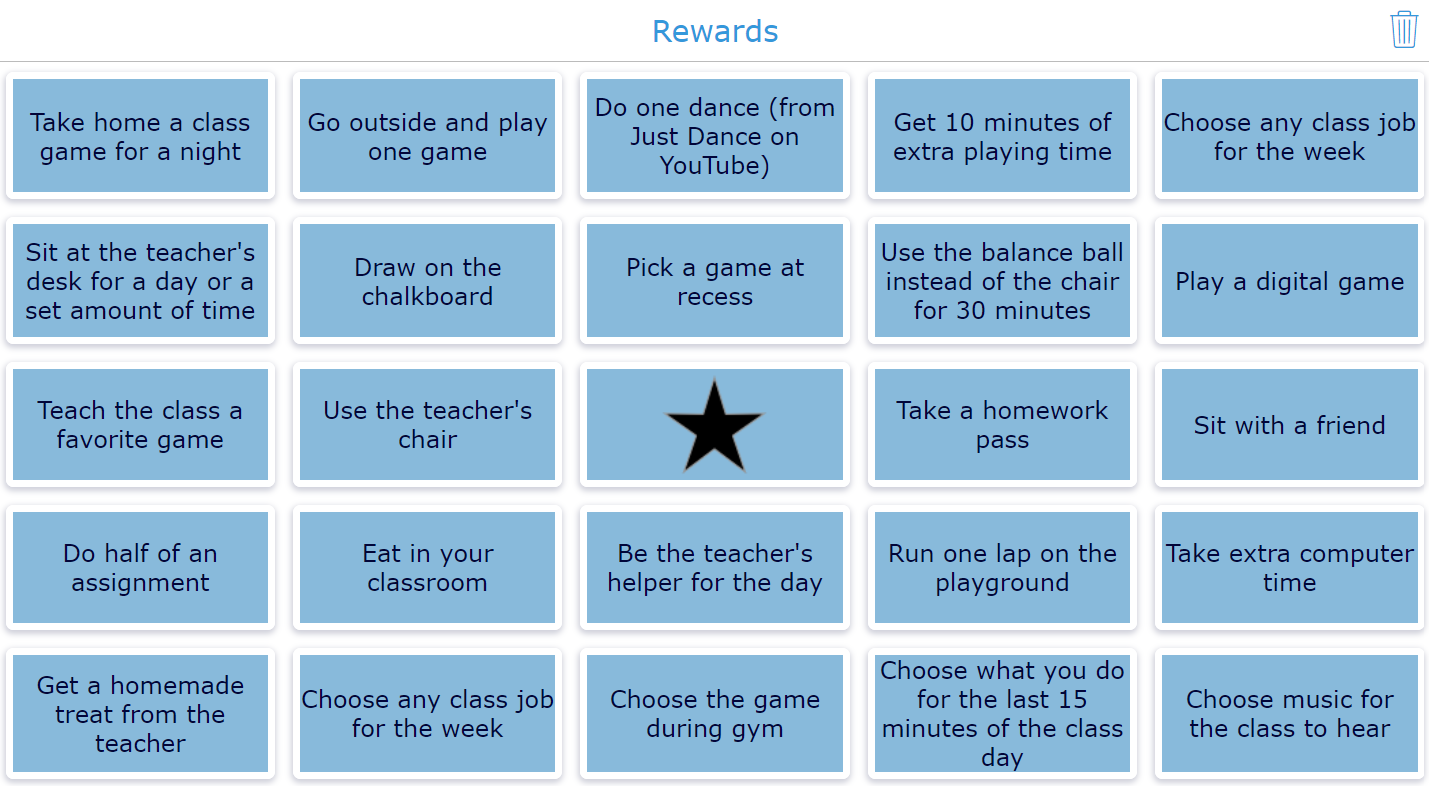
As you can see in the Bingo, it is possible to use digital game activities as a reward. Check out this blog post for more inspiration.

Online reward system for primary school
When it comes to class management in primary school you must have already heard of ClassDojo. If not, don’t worry, I’ll explain it to you.
ClassDojo is a free digital reward system in which every student gets evaluated on positive and negative behavior. Not only the teacher has access to ClassDojo, also the students and their parents can access the platform by entering a unique code.
As a teacher, you set up some “behavior tags”. A behavior tag consists of a description and an icon. You can add icons with a description of your own. Choose a description for the positive behavior tags and a description for the negative behavior tags.
Positive behavior gets the value “+1” and negative behavior gets “-1”. The teacher assigns the positive and negative behavior icons to the students.
When the class or week ends, you can take a look at the overview of the behavior icons you assigned to your class. You can check out the student individually or the whole class. You can also add a comment for the student’s parents.
With ClassDojo students can keep their own digital portfolio. Students can add pictures and videos of work to their Story, and share it with their parents.
The fun thing about ClassDojo are their little monsters. Every student is a different monster. It’s very visual and funny!
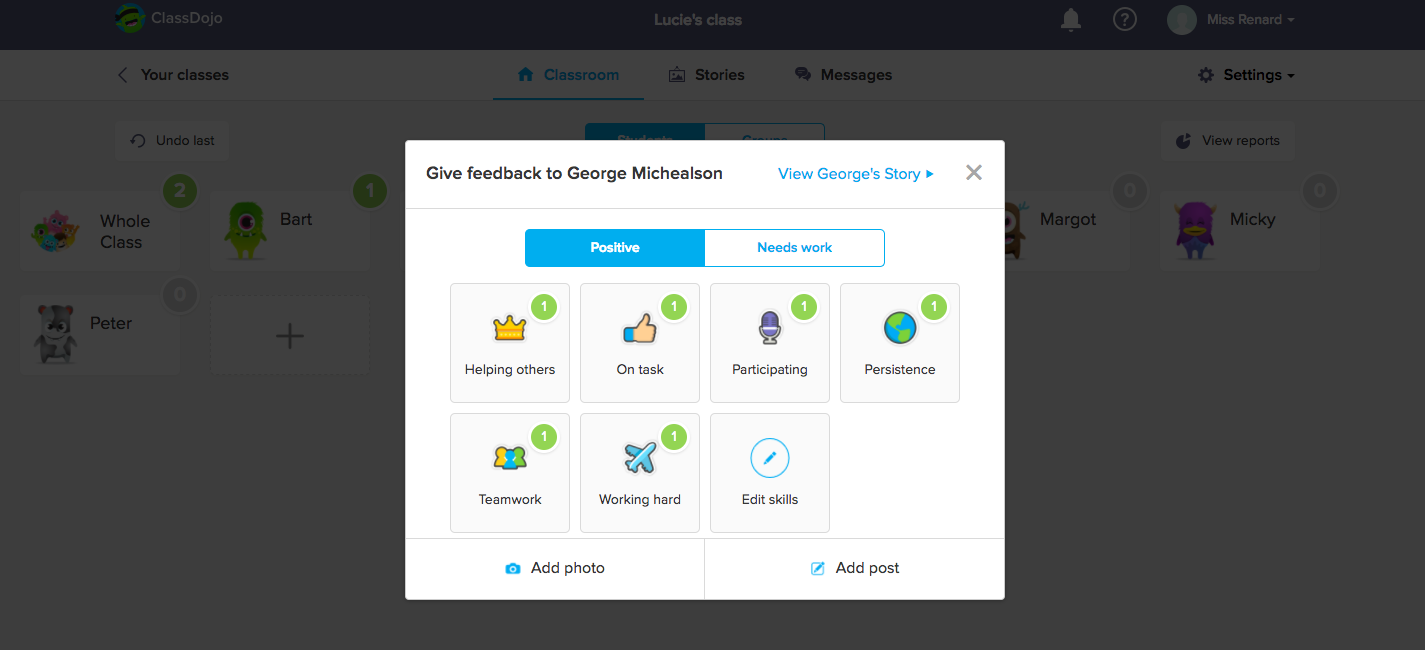

Online reward system for middle school and high school
Of course, you need to be able to manage older students as well. They won’t be eager to behave better because they get a badge or a treat. They need something else. You’ll need Classcraft.
I’ve recently discovered this amazing class management game! This is probably the most awesome game and class management solution I’ve ever seen. I’m a total fan of the fantasy world, so why not just use your imagination in the classroom?
Classcraft engages students to live by your class rules in an interactive way.
Students can create their own avatars that have special powers. They play in groups. If someone ignores a deadline, it may fire back on the whole group. Working together and having respect for each other is very important.
Students can gain different points by playing by the classroom rules. For example: students who help other students receive a certain amount of points. When they have enough points, they can use a power like: the “warrior” can eat in class”. They can also lose those points by not playing by the rules. If they lose all their points they get a sentence like: bring a treat for the whole class or hand in an assignment a day early.
You can choose every power and sentence. Classcraft also has a timer and a stopwatch available, as well as a quiz tool where the avatars have to battle a “boss”. In order to beat the boss, they have to get the answers right.
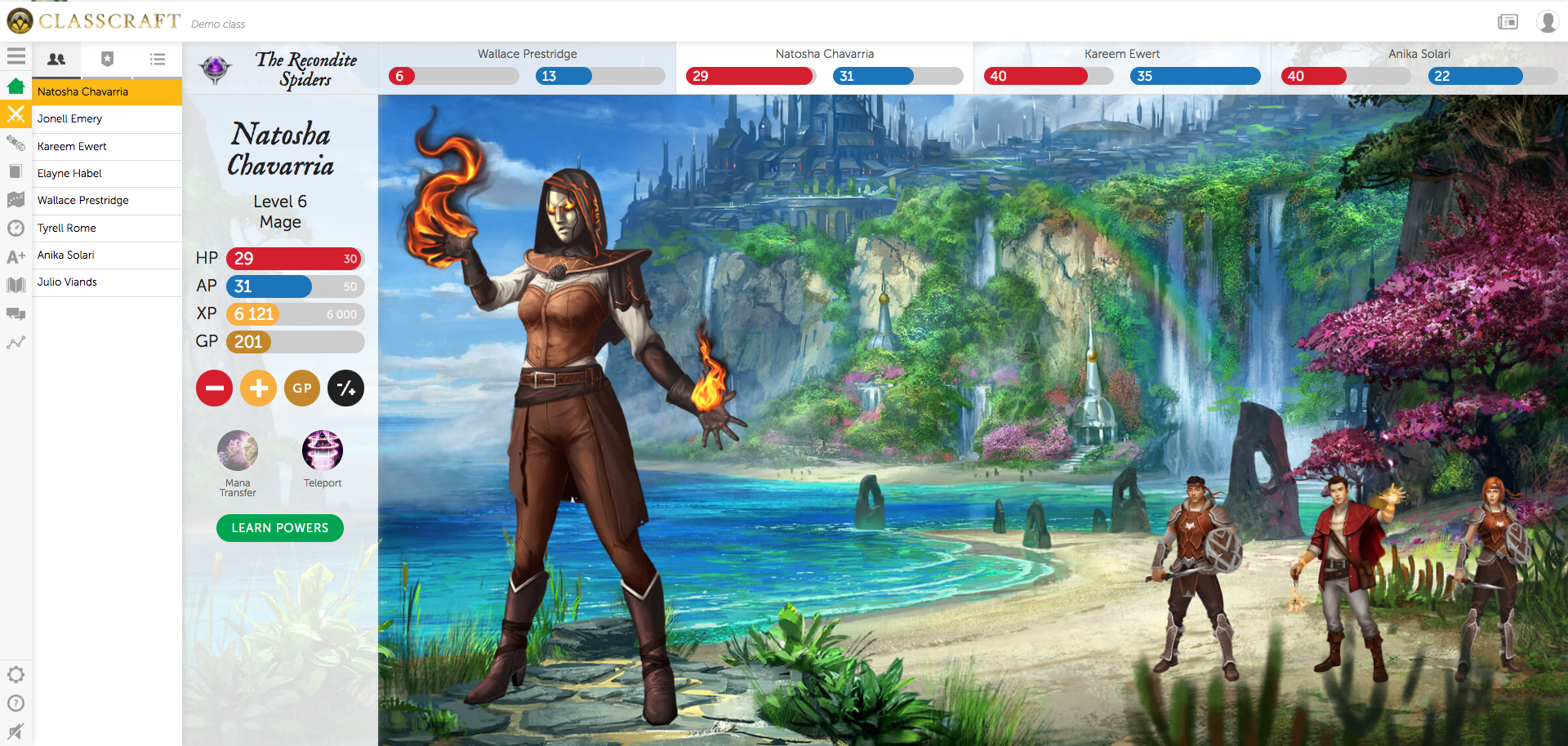

How to put a reward system to work
School reward systems can help, but you can’t just try out something without clearly thinking it through. Here’s how you best put a reward system to work.
1. Set class goals
 Set class behavior goals that are achievable and measurable. For example: when you raise your hand, all the students stop talking within 20 seconds. Let your students participate in setting up those goals. It will motivate them more to abide by the rules.
Set class behavior goals that are achievable and measurable. For example: when you raise your hand, all the students stop talking within 20 seconds. Let your students participate in setting up those goals. It will motivate them more to abide by the rules.
2. Define how you will use the reward system
 This is the key to success. When are students receiving rewards? What are your boundaries? Make your intentions clear. For example: students will receive a reward when they help another student, they finish homework a day early, when they participate in class.
This is the key to success. When are students receiving rewards? What are your boundaries? Make your intentions clear. For example: students will receive a reward when they help another student, they finish homework a day early, when they participate in class.
3. Explain why you gave a reward
 Give your students specific, genuine feedback attached to the reward. For example: “John, you showed respect by letting Marc in before you”.
Give your students specific, genuine feedback attached to the reward. For example: “John, you showed respect by letting Marc in before you”.
4. Give students a voice
 Like I’ve said before, it’s important to let your students participate in choosing rewards. To be sure that rewards are valuable and motivating for the students, you can have a brainstorm about it. Let them put together a list of acceptable rewards. You still have the final word!
Like I’ve said before, it’s important to let your students participate in choosing rewards. To be sure that rewards are valuable and motivating for the students, you can have a brainstorm about it. Let them put together a list of acceptable rewards. You still have the final word!
5. Reward early
 Just like giving feedback, rewards must be given shortly after the shown behavior. In that case, students won’t forget what they did to deserve it and other students won’t get suspicious.
Just like giving feedback, rewards must be given shortly after the shown behavior. In that case, students won’t forget what they did to deserve it and other students won’t get suspicious.
6. Lessen the rewards over time
 Raise your expectations for the student’s behavior in order to receive the same reward. Students shouldn’t get addicted to rewards. They have to work because of an intrinsic motivation. As students achieve success in your class, they can learn to be motivated by their own achievements.
Raise your expectations for the student’s behavior in order to receive the same reward. Students shouldn’t get addicted to rewards. They have to work because of an intrinsic motivation. As students achieve success in your class, they can learn to be motivated by their own achievements.
7. Give random rewards
 Rewarding students randomly for their behavior and achievements keeps them on their toes. They’ll want to be on task just in case!
Rewarding students randomly for their behavior and achievements keeps them on their toes. They’ll want to be on task just in case!
Wrap up
Now it’s up to you! Stimulate the learning process and motivate good behavior in your classroom. Attention! Keep the disadvantages in mind. Which reward system are you using? Let us know on Twitter! Perhaps you know other online reward systems? Be sure to share it in our Facebook group!
And don’t forget to connect with me on LinkedIn.
